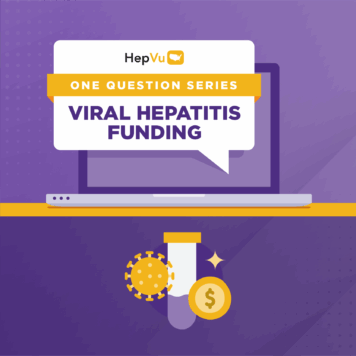Samuel So, MD, is the Lui Hac Minh Professor and Professor of Surgery at the Stanford University School of Medicine, founder of the Stanford Liver Cancer Center, and the founder and executive director of the Asian Liver Center at Stanford University School of Medicine.
Q: You are recognized internationally for your expertise in Hepatitis B, Hepatitis C, and liver cancer prevention, research, treatment, and policy. What led you to this field of medicine?
It has been an interesting journey. I started my career as a transplant surgeon. In those relatively early days in the field of transplantation, I devoted my time and efforts to optimize the short-term and long-term outcomes of pediatric and adult transplant recipients. In the process, I became very interested in studying the causes of and prevention of life-threatening viral infections in immunocompromised transplant recipients.
As a surgeon, I have seen many adults who lost their lives to liver cancer and liver cirrhosis caused by chronic Hepatitis B and C infection. Despite the tireless efforts we made to save patients with liver transplantation and liver cancer treatments, the impact of these treatments in reducing overall mortality is very small at a population level. On the other hand, most if not all the deaths from Hepatitis B and C could be averted through a comprehensive strategy consisting of prevention, early diagnosis, and anti-viral treatment. That is what inspired me to devote the second part of my career to addressing the gaps in viral hepatitis and liver cancer prevention, research, awareness, treatment, and health care policies.
Q: Based on your experience, can you provide any insights on the current landscape of liver cancer both in the U.S. and globally and its link with Hepatitis B and C?
Although primary liver cancer or hepatocellular carcinoma is not a very common cancer in the United States, it remains a common cancer and cause of cancer death in the world. In 2020, liver cancer was the third leading cause of cancer deaths (830,000 deaths) and the sixth leading cause of cancer incidence (905,677 new cases) in the world. The most common cause of liver cancer, particularly in low- and middle-income countries is chronic infection with Hepatitis B or C. According to the International Agency for Research on Cancer, the number of new liver cancer cases and deaths each year is projected to increase by 29% by 2030. This is likely related to the increasing number of infected adults, who with age, are more likely to develop cirrhosis and liver cancer. But we can reverse this deadly trend if there is a global commitment by countries to commit resources and funding to scale up access to curative antiviral treatment for Hepatitis C and anti-viral suppressive therapy for Hepatitis B.
In the United States, there were an estimated 42,000 new cases and 30,230 deaths from liver and intrahepatic bile duct cancer in 2021 (as of this writing). About 65% of hepatocellular carcinoma is associated with Hepatitis B or C. After two decades of continued increase, the incidence of hepatocellular carcinoma appeared to have reached a plateau and has even seemed to begin to decline in the U.S. despite the rising obesity epidemic (obesity causes fat to deposit in the liver which can lead to scarring and cirrhosis). I believe this is likely attributed to an increase in antiviral treatment for chronic Hepatitis B and C. As more state Medicaid programs drop fibrosis restrictions for Hepatitis C treatments, I am optimistic that the incidence of hepatocellular carcinoma related to viral hepatitis in the U.S. will continue to decline.
Q: Your current clinical specialty focuses on a “multidisciplinary approach in the treatment of primary liver cancer and management of chronic Hepatitis B infection.” Hepatitis B impacts as many as 2.2 million people in the U.S. and can lead to liver cancer if untreated – however, more than half of people with the virus are unaware they have it. Why is there such a lack of awareness in the U.S. around Hepatitis B?
Unfortunately, unlike HIV/AIDS, people living with chronic Hepatitis B and C infection have received little if any media or celebrity support or attention. Have you ever heard of any viral hepatitis concerts to raise awareness or funds to support treatment or to eliminate Hepatitis B and C stigma? Chronic hepatitis B and C have long been ‘orphan diseases.’ As a result, chronic hepatitis B and C have largely been neglected. Even at the CDC, viral hepatitis was only added in 2006 as a division within the National Center for HIV, STD, and TB Prevention. Many in the public, as well as national and global leaders in health policies and government, are not aware that more people die in the world as a whole and in the U.S. specifically from Hepatitis B and C than HIV/AIDS. And many are not aware that most of the complications and deaths can be averted through hepatitis screening and treatment.
Q: You are also the founder and executive director of the Asian Liver Center at Stanford University School of Medicine. Why are Asian American, Native Hawaiian, and Pacific Islander (AANHPI) populations disproportionately impacted by chronic Hepatitis B and liver cancer? How is the Asian Liver Center working to address this health disparity?
Chronic Hepatitis B is highly endemic in Asia and the Pacific Islands. For instance, in Vietnam and China, about 1 in 8 to 1 in 12 adults have chronic Hepatitis B infection. Many became infected through mother-to-child transmission or horizontal transmission (i.e., person-to-person spread) at a young age before their countries introduced a national program to provide free Hepatitis B immunization programs for infants and newborns. And since many Asian Americans are non-U.S. born, many could have become infected before they migrated to this country, hence accounting for the high prevalence of chronic Hepatitis B and high incidence of Hepatitis B- related liver cancer in the U.S.
I founded the Asian Liver Center in 1996 after relocating from the Midwest to the San Francisco Bay Area, when I noticed the silent epidemic of liver cancer and end-stage liver disease caused by Hepatitis B in the AANHPI community. At that time, there were no national, regional, or local initiatives in the United States to raise awareness about the burden of chronic Hepatitis B and liver cancer in AANHPI, which represents the greatest health disparity between AANHPI and White Americans. Since then, our center employed a strategy represented by the acronym “CARE” that stands for building collaboration, advocacy, research, and education to address the gaps in Hepatitis B awareness, research, national guidelines, and policies with the goal of eliminating Hepatitis B and reducing the burden of liver cancer in the United States and in the World.
Branding, as we learned from HIV, is important to raise awareness and rally people worldwide. In 2000, we launched the jade ribbon campaign, a culturally and linguistically targeted initiative to provide print and multimedia public service announcements, bus ads, community free screenings, educational pamphlets, etc. to raise Hepatitis B awareness and increase knowledge in the San Francisco Bay Area and in California more generally. We used the color jade (jade in many cultures represents good health and longevity) to increase public and health care providers’ awareness about the importance of Hepatitis B testing, vaccination, and linkage to care for monitoring and treatment of liver inflammation and liver cancer. I am pleased to see that the Hepatitis B and C and liver cancer communities in many parts of the world have adopted various shades of green or jade for their awareness initiatives as well.
Q: Recently, California Governor Newsom signed AB789, which was developed in collaboration with the Asian Liver Center. Can you speak to how this law will help advance screening efforts for Hepatitis B and C and share insights on what other public health strategies are necessary to achieve our goals in controlling and ending the viral hepatitis epidemic worldwide?
More people die in California from Hepatitis B and C every year than in any other state. Deaths from Hepatitis B and C in California are 3x higher than HIV/AIDS deaths. Hepatitis B and C also represent major health inequities and disparities that disproportionately affect certain racial and ethnic populations in California. An estimated 89% of adults in California with Hepatitis B are AANHPI and 16% of adults with Hepatitis C are Black Americans. Hepatitis B and C account for over a third of the liver transplants in adults in CA each year.
However, the CDC estimates only about a third of adults living with chronic Hepatitis B and 60% with Hepatitis C are aware they are infected, and only a third with chronic Hepatitis B and 45% with chronic Hepatitis C are linked to hepatitis evaluation and treatment. After learning from the success and challenges of the 2014 New York state Hepatitis C testing law, AB 789 was developed to close the gaps in both Hepatitis B and C screening and linkage to care in California with the goal of reducing the costly complications and deaths related to chronic Hepatitis B and C infection. It would also bring California closer to meeting the 2030 national and global 90% diagnosis and 80% treatment targets.
The law that will go into effect on January 1, 2022, will require adults who receive primary care services in virtually any setting to be offered 1) a voluntary Hepatitis B and C screening test according to the latest screening indications recommended by USPSTF, and 2) if the screening test is positive, the health care provider shall offer the patient follow-up health care or refer to a health care provider for follow-up care and treatment according to the AASLD recommended Hepatitis B and C clinical practice guidelines. The law will make California the first state in the country that requires adults to be offered a voluntary Hepatitis B and C screening test.
The new law will increase viral hepatitis awareness and I hope will also make Hepatitis B and C screening and treatment become part of the standard of care by primary care providers in California. The law could hasten clinics and other settings that provide primary care services to incorporate policies and algorithms for hepatitis screening and follow-up care into their electronic medical records, so it would be a no-brainer for primary care providers. The passage of AB 789 with bipartisan support without a single “no” vote in both houses of the California legislature was amazing and showed that it is feasible in other states as well to gain broad-based political support to end the epidemic of Hepatitis B and C and to save lives.
Q: October is Liver Cancer Awareness Month. Given your extensive experience in this area, what message do you have for the viral hepatitis community this month?
Everyone recognizes the seriousness of cancer, but many people still are not aware that a major cause of liver cancer is related to untreated chronic Hepatitis B or C infection, and you can be infected with Hepatitis B and C without having any symptoms. Liver Cancer Awareness Month in October, World Hepatitis Day on July 28, and World Immunization Week on April 20-30 provide the viral hepatitis community three excellent opportunities every year to educate the public, health care professionals, and policymakers about the importance of Hepatitis B and C prevention, testing and treatment to prevent liver cancer and to save lives.
Examples of some of the jade ribbon slogans on awareness posters and billboards we have developed for public health departments in Asia include “Prevention of liver cancer begins at birth with the Hepatitis B vaccine,” and “Protect you and your family from liver cancer; Get tested for Hepatitis B.”
I encourage the viral hepatitis community to Join Jade to raise awareness to end Hepatitis B and C and liver cancer in the world.




